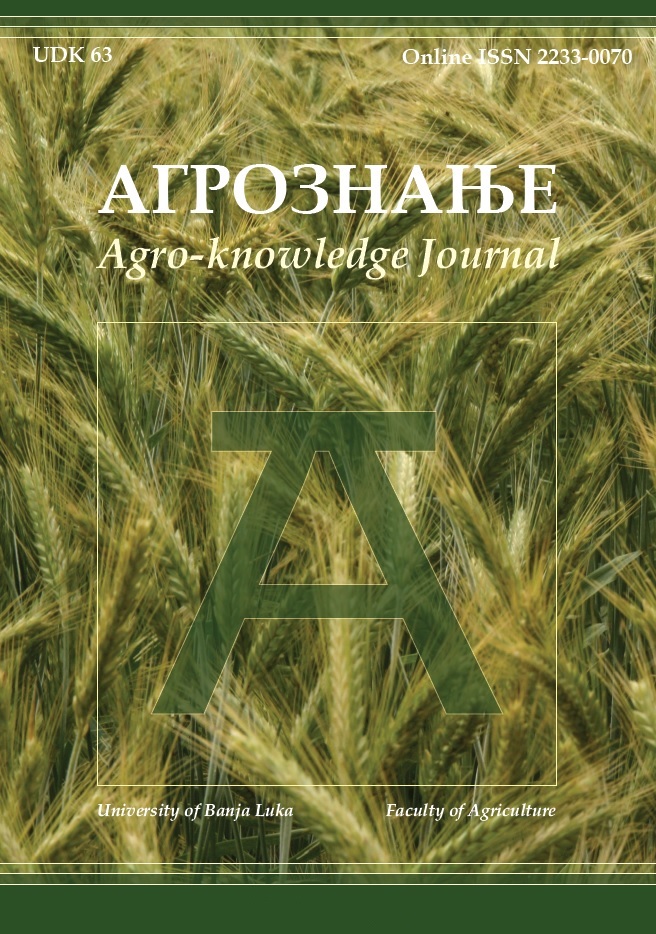Significance of the apiary location for the content of copper and zinc in the bee pollen
DOI:
https://doi.org/10.7251/AGREN2401001MKeywords:
bee products, pollen, copper, zinc, honey beesAbstract
Bee pollen is one of the most valuable direct products of honey bees. Bees as well as humans use pollen in their nutrition as a high-quality supplement. Therefore, information about the mineral content of pollen is valuable. The aim of this study was to determine the amounts of copper (Cu) and zinc (Zn) in the bee pollen collected from the three locations (Kozarska Dubica, Petrovo, and Srbac). Quantification of copper and zinc was done by atomic absorption spectrophotometry after acid digestion (HNO3+HClO4) of pollen. The highest contents of both elements were found in the bee pollen from Kozarska Dubica (8.41 mg Cu/kg, 29.52 mg Zn/kg). The lowest Cu content was found in the samples from Petrovo (6.19 mg/kg), while the lowest Zn content was determined in the pollen from Srbac (22.06 mg/kg). Additionally, there were statistically significant differences in the content of both elements between pollen originating from different locations. As the location of the apiary was mainly determined by its proximity to potential sources of metal contamination, botanical origin of pollen and technology of pollen collection, it is important to investigate their impact in more detail on the elemental content of pollen in the future.

